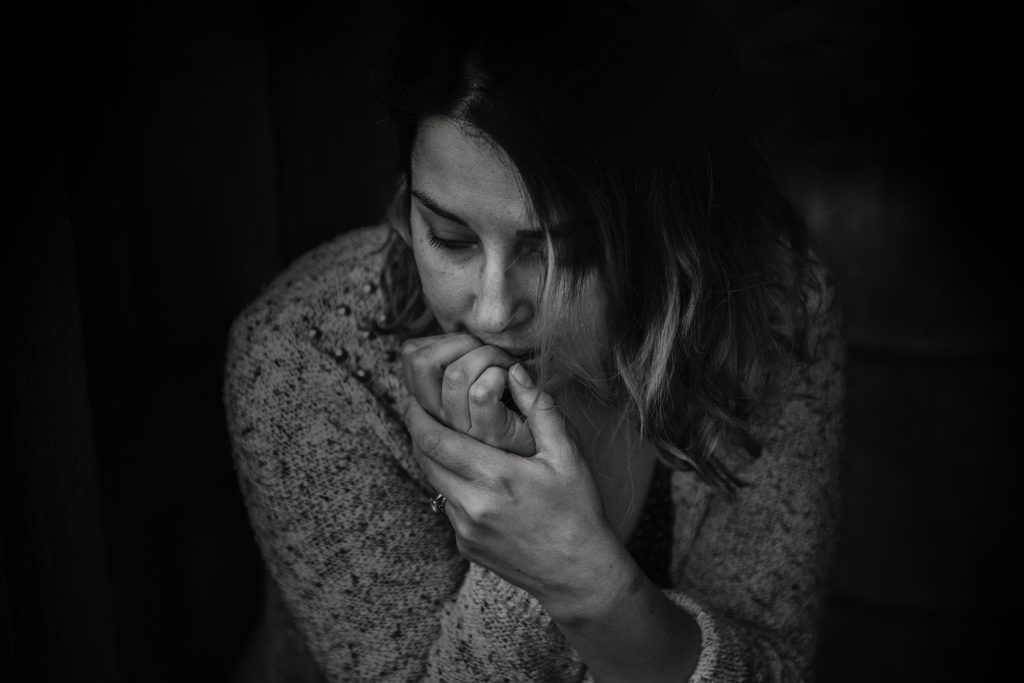
Seasonal Affective Disorder (SAD) is a type of depression that is connected to the change in seasons.
SAD typically begins in the Fall and worsens during the Winter when the daylight periods are the shortest, according to Douglas Spotts, M.D., FAAFP, vice president and chief health officer of Meritus Medical Group.
Though many people feel the symptoms of the “winter blues” such as lethargy and minor gloominess, SAD differs in that it is a much more severe form of seasonal depression and may require treatment. According to the Diagnostic and Statistical Manual of Mental Disorders, SAD is a major form of depression that begins and ends during a specific season every year and completely diminishes during other seasons. It also must occur for at least two years and a person must have more seasons of depression than seasons without depression over their lifespan to be considered a true case of SAD.
There also seems to be a correlation between latitude and SAD.
Studies show that a greater percentage of the population is affected as latitudes increase. Areas where latitude is at least 30 degrees seem to be most affected. Those living farthest from the equator in Northern latitudes are most susceptible.
According to a study in Alternative and Complementary Therapies published in 2008, 1% of those who live in Florida and 9% who live in Alaska experience SAD. In addition, SAD occurs four times more often in women than in men and the age of onset is estimated to be between 18 and 30 years.
Symptoms of SAD may include:
- Feelings of daily depression
- Lack of joy
- Lethargy
- Sleeping too much or too little
- Increased appetite and weight gain
- Agitation
- Difficulty concentrating
- Feelings of hopelessness
- Frequent thoughts of suicide
Certain factors may increase a person’s risk of developing Seasonal Affective Disorder such as a family history of SAD, having major depression or bipolar disorder, or living in a Northern latitude during Winter months.
According to a 2014 study published in European Neuropsychopharmacology, patients with Seasonal Affective Disorder show seasonal fluctuations in their cerebral serotonin transporter binding. This means that people with SAD have trouble regulating the neurotransmitter, serotonin, which is important in the balance of mood.
This study suggests that people with SAD have more of a protein called SERT during the Winter months. The more SERT a person has, the lower the level of serotonin, thus increasing the risk of developing depression. Since these symptoms seem to disappear during the Summer, it is thought that the lack of sunlight during Winter contributes to SAD.
In addition, researchers found that people with SAD may also have a problem with the overproduction of melatonin, which is a hormone that responds to darkness by causing sleepiness and a lack of energy. Decreased exposure to sunlight may also contribute to a lower production of Vitamin D, which has also been linked to decreased serotonin levels and depression.
Whether you suffer from the winter blues or a more severe case of SAD, a wide array of treatment options are available.
- Sleep: Make an effort to go to sleep and wake at the same times every day. This will help normalize your circadian rhythms, which are the normal mental, physical and behavioral cycles you follow daily.
- Eat well: Much the same way you should schedule sleep, you should schedule your eating. People suffering from SAD are often prone to overindulging in the consumption of carbohydrates. This, combined with decreased activity levels in the winter, can lead to weight gain. In addition, try to focus on complex carbohydrates such as whole grains instead of giving in to sugar cravings.
- Exercise: Aerobic exercise and interval training, which combines bouts of intense activity with short periods of rest or low intensity activity, have also shown to be effective in battling SAD. It is recommended, however, that late night exercise sessions might further interrupt the body’s sleep/wake cycle so earlier workouts may be warranted. For best results, try exercising outside in the sunlight or inside, under bright lights. Professional fitness trainer, Steve Kurtz, of TLC Fitness in Williamsport, says that he has clients diagnosed with SAD and often incorporates exercise into their treatment regimen. Specific exercise prescription varies depending on the individual fitness goals and experience level of his clients but weight training, cardio and/or metabolic circuits are often utilized. In addition, Kurtz has found that high intensity exercise and sprint interval training have been the most effective to lift client’s moods and morale.
- Vitamin D. Studies have also shown a link between Vitamin D deficiency and SAD. Though much research still needs to be performed in this area, there is evidence that treatment with Vitamin D3 supplementation has been shown to be effective in reducing the symptoms of SAD. Vitamin D is, however, a fat soluble vitamin meaning that it stores in body-fat, thus making toxicity more likely if high dosages are taken unnecessarily. Check with your physician before taking any nutritional supplements as testing may be necessary.
- Socialize. Since SAD is a form of major depression, regularly connecting with friends and family will help boost your mood. Participating in fun hobbies will also help.
- Light Therapy. Light therapy has been studied quite intensively and has been shown to be effective in treating low to moderate symptoms and involves exposure to full-spectrum lighting. While there are many different devices currently available, the most common is a light box with 10,000 lux of full-spectrum light behind an ultraviolet shield. According to Spotts, treatment should be for approximately 30-60 minutes, be taken within the first hour of waking up, and done 12-16 inches from the device with the eyes open but not looking directly at the light.
- Counseling. Cognitive Behavioral Therapy (CBT) may also be beneficial in treating SAD. CBT helps to identify negative patterns and problems that seem overwhelming and help to change the way people think about those problems.
- Antidepressant Therapy. Pharmaceutical treatment options may include antidepressant drugs such as fluoxetine or bupropion. Individuals that think they may be experiencing SAD should check with their Primary Care Physician to see if antidepressants are right for them.
Seasonal Affective Disorder can be a very serious condition and attention from a medical professional may be warranted.
As with other types of depression, check with your doctor if you are experiencing symptoms of depression or if you find that you have other symptoms such as: social withdrawal, problems at work or school, are abusing alcohol or drugs, anxiety, eating disorders, or are having thoughts of suicide.
“Most important is to talk with your primary care physician or provider if you are having these symptoms or just don’t feel your best. SAD is nothing of which to be ashamed; Recognize the signs, talk to a healthcare professional and get treated so that you can enjoy any season,” Spotts said.




